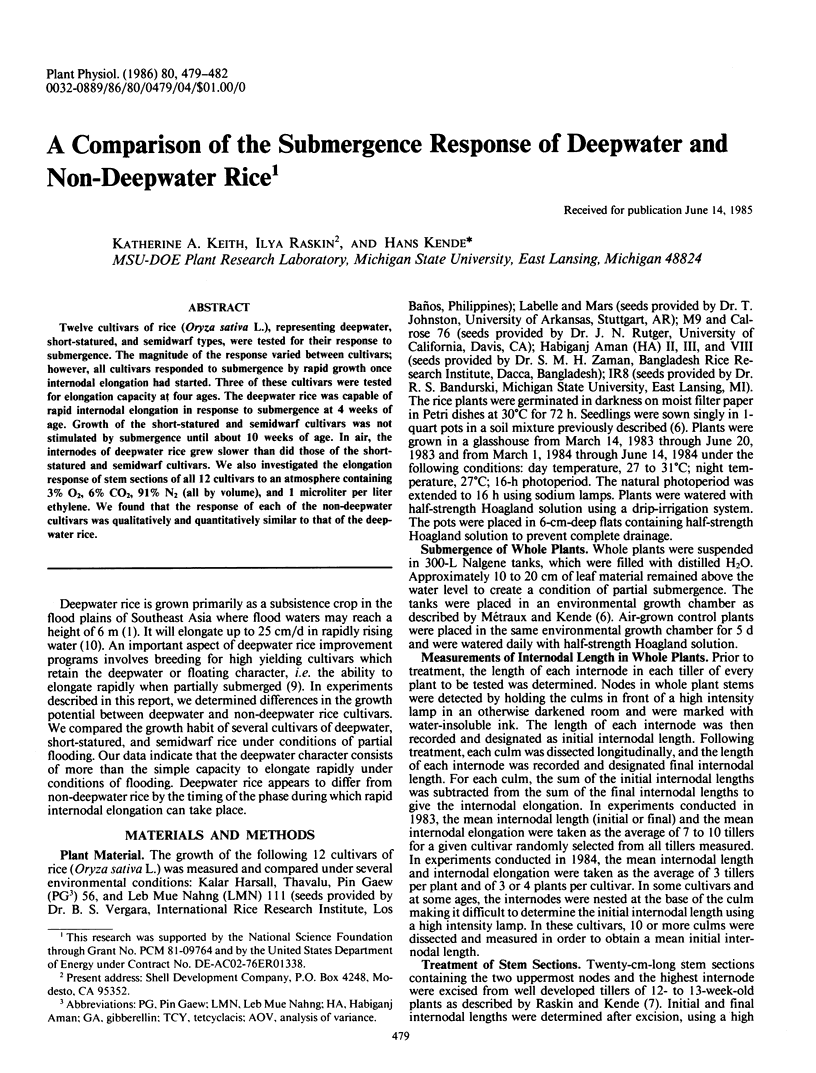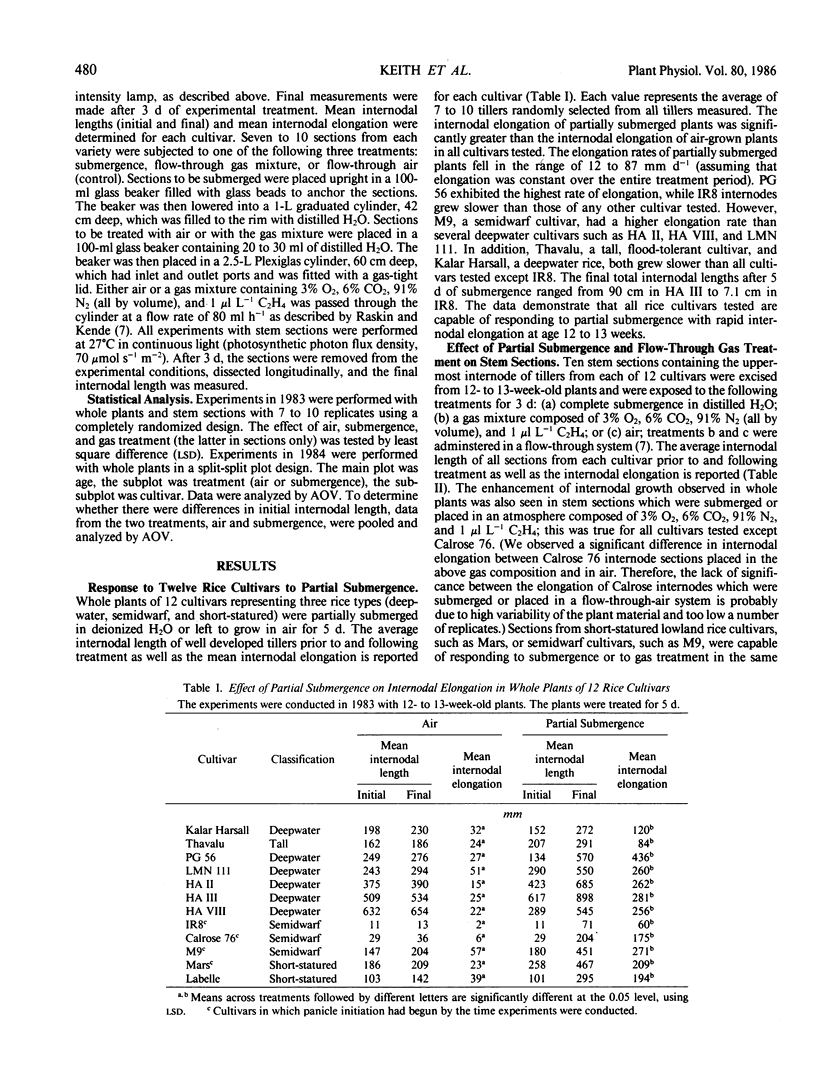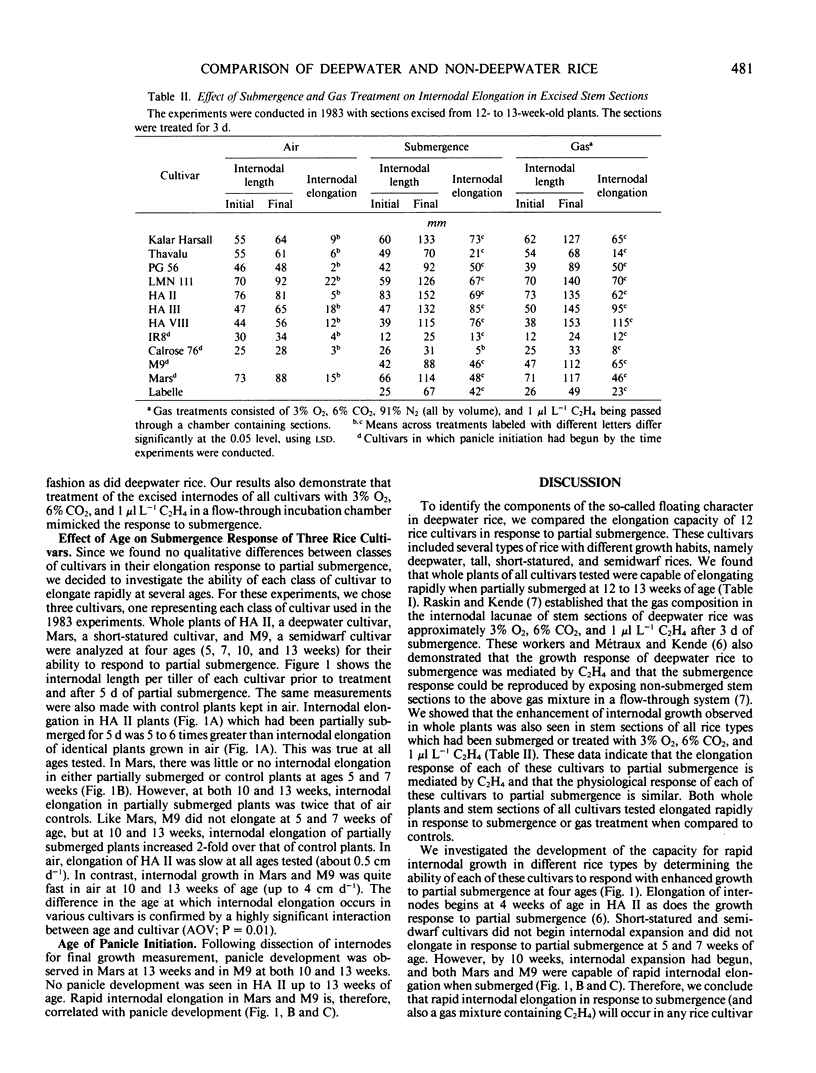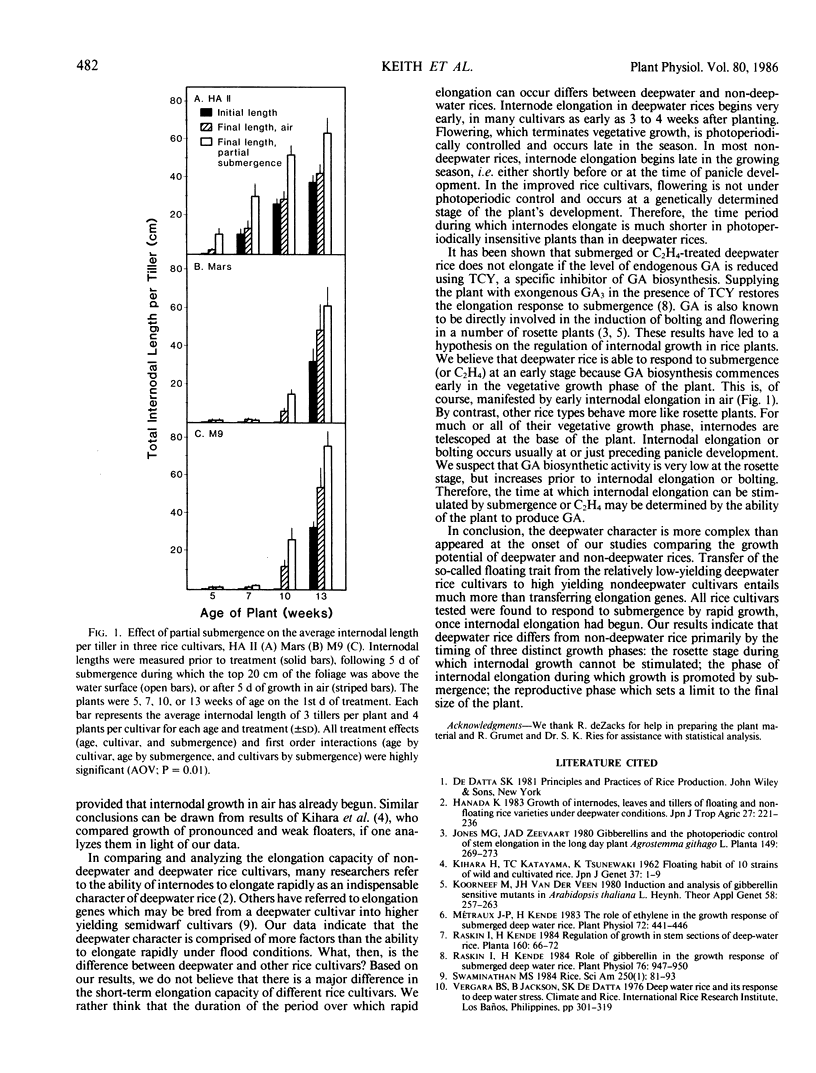Abstract
Twelve cultivars of rice (Oryza sativa L.), representing deepwater, short-statured, and semidwarf types, were tested for their response to submergence. The magnitude of the response varied between cultivars; however, all cultivars responded to submergence by rapid growth once internodal elongation had started. Three of these cultivars were tested for elongation capacity at four ages. The deepwater rice was capable of rapid internodal elongation in response to submergence at 4 weeks of age. Growth of the short-statured and semidwarf cultivars was not stimulated by submergence until about 10 weeks of age. In air, the internodes of deepwater rice grew slower than did those of the short-statured and semidwarf cultivars. We also investigated the elongation response of stem sections of all 12 cultivars to an atmosphere containing 3% O2, 6% CO2, 91% N2 (all by volume), and 1 microliter per liter ethylene. We found that the response of each of the non-deepwater cultivars was qualitatively and quantitatively similar to that of the deepwater rice.
Full text
PDF



Selected References
These references are in PubMed. This may not be the complete list of references from this article.
- Métraux J. P., Kende H. The role of ethylene in the growth response of submerged deep water rice. Plant Physiol. 1983 Jun;72(2):441–446. doi: 10.1104/pp.72.2.441. [DOI] [PMC free article] [PubMed] [Google Scholar]
- Raskin I., Kende H. Role of gibberellin in the growth response of submerged deep water rice. Plant Physiol. 1984 Dec;76(4):947–950. doi: 10.1104/pp.76.4.947. [DOI] [PMC free article] [PubMed] [Google Scholar]


